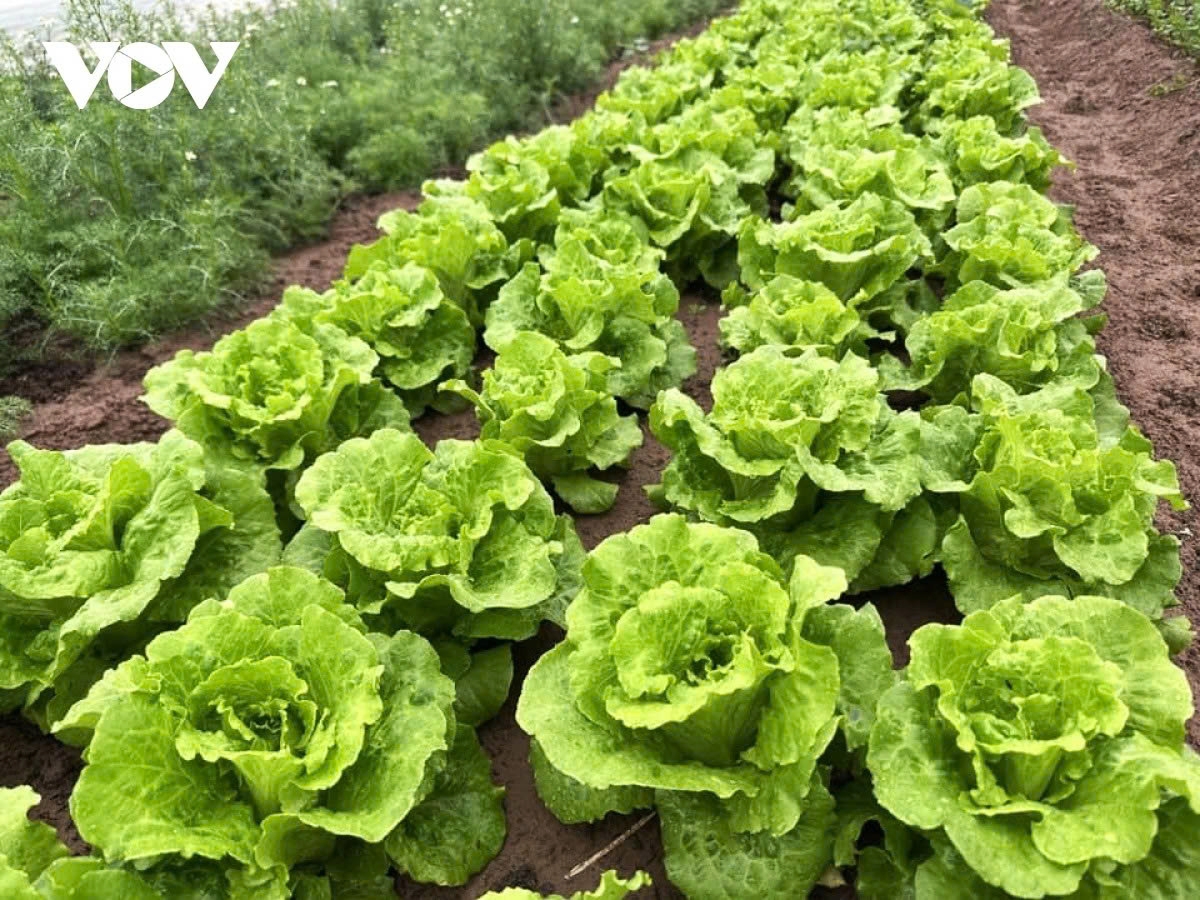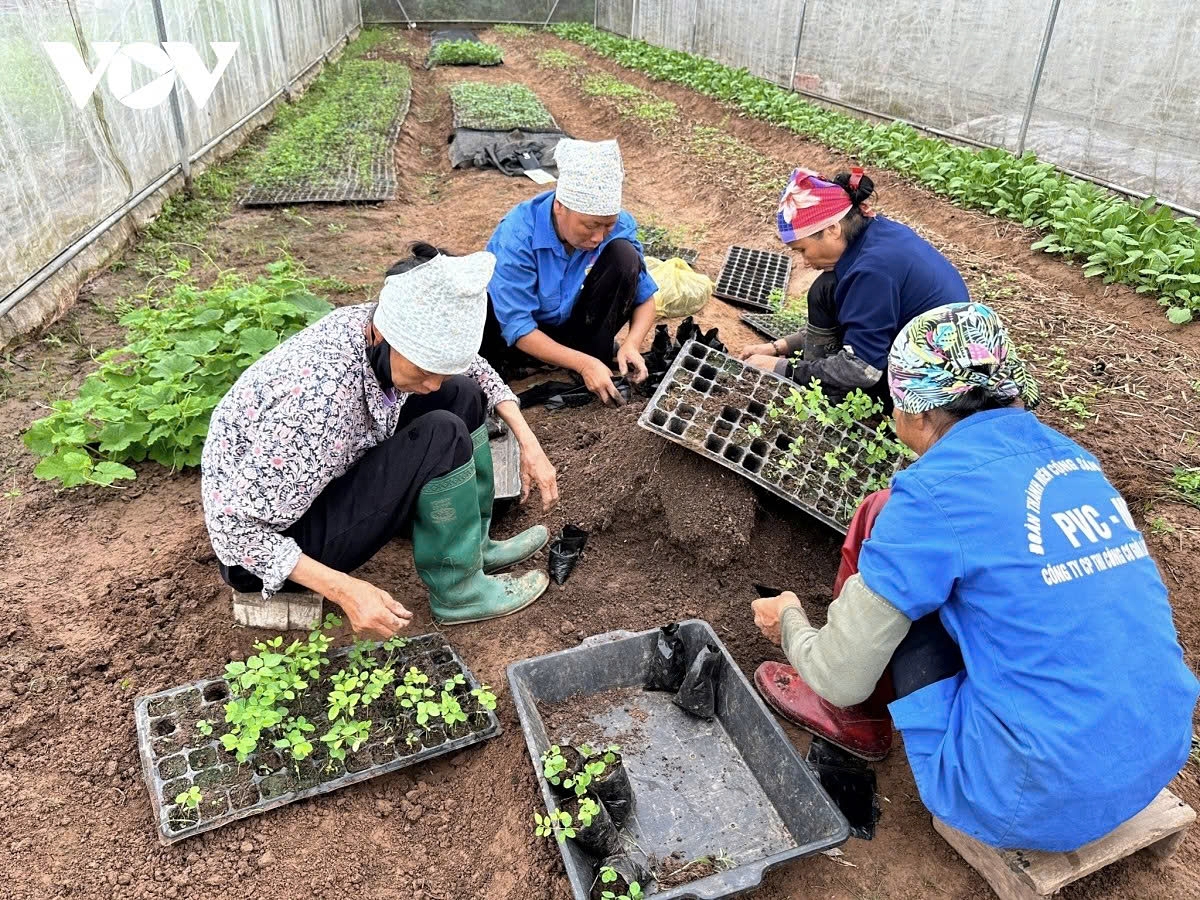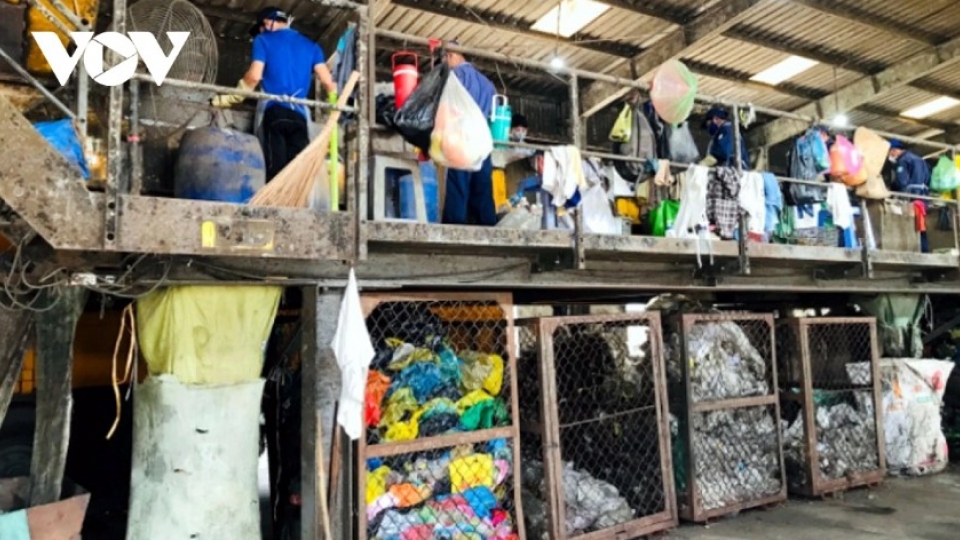Circular economy - a strategic path for sustainable agriculture in Vietnam
VOV.VN - Circular economy in agriculture is increasingly recognised as a vital approach to building a modern, sustainable sector that maximises value, reduces costs, and minimises environmental impacts.

However, transitioning from a linear agricultural model to a circular one still faces numerous challenges that need to be addressed.
A lack of incentives
In agriculture, circular economy involves closed-loop production, using agricultural by-products such as straw, husks, sugarcane bagasse, coffee pulp, and livestock waste as input materials for new production processes. By applying science and technology, this model optimises resources, cuts input costs, and mitigates negative environmental effects.
At Lam Son Sugar Joint Stock Company (Thanh Hoa province), investing in power generation technology from sugarcane bagasse enables the plant to operate at a capacity of 33.5 MW per year, saving production costs and reducing approximately 33,000 tonnes of CO2 emissions annually. Surplus electricity is fed into the national grid, generating additional revenue of VND80 billion per year.
However, the current feed-in tariff for surplus electricity is lower than that for other biomass power plants, and the purchase agreement has yet to be finalised due to procedural hurdles, highlighting the need for timely resolution.
According to Do Van Tung, deputy director of the plant, the current selling price for surplus electricity from the plant fed into the national grid is 7.03 US cents/kWh, whereas the selling price for electricity from other biomass power plants is 8.47 US cents/kWh.
“The company sincerely hopes to have a reasonable electricity pricing mechanism applied. Currently, the power purchase agreement between our sugarcane bagasse and other biomass-fueled power plant and Electricity of Vietnam has not yet been renewed, due to complications with certain procedures. We hope this issue can be resolved soon,” said the deputy director.
Agricultural production depends heavily on weather conditions, so farmers often seek to reduce input costs through circular economy models.
At the farmer level, several circular economy models are being applied. Gen Xanh Organic Agricultural Cooperative (Hanoi) collects plant residues, leaves, roots, and treated chicken manure to produce organic fertiliser, enriching soil fertility, reducing input costs, and enhancing crop value. The cooperative faces challenges due to short-term land leases and seeks government support in marketing initiatives to promote its products and increase market value.
“We hope that the authorities will facilitate long-term land leases to allow for expansion of cultivation and investment, because currently the cooperative is renting land from local farmers for only a short period of about 5–10 years, which makes farming operations very difficult. The government also needs to have trade promotion programmes at the scale of cooperatives and small farms, so that farmers can market their products to consumers, helping to increase product value and secure market access,” suggested Nguyen Duc Chinh, director of Gen Xanh.
According to Hoang Quang Phong, vice president of the Vietnam Chamber of Commerce and Industry (VCCI), circular economy models can reduce input costs by 40–50% and increase farmers’ incomes by 25–30%. Yet, obstacles remain regarding land access, financing, technology, supportive policies, and the small scale of production, which hinders the implementation of closed-loop systems requiring larger areas.
Farmed-centred approach in dire need

Vietnam is facing major challenges in agricultural development, such as resource degradation and land deterioration, as well as the severe impacts of climate change, including droughts, floods, and saltwater intrusion, especially in the context of Vietnam’s commitment to achieving net-zero emissions by 2050.
Emphasising the central role of farmers, Le Duc Thinh, director of the Department of Cooperative Economy and Rural Development under the Ministry of Agriculture and Environment, stressed the need for a national strategy for circular agriculture and the development of regional, sectoral, and local circular models, especially in areas with competitive advantages.
The fact is that the linear economy has existed for decades, and farmers often focus on immediate gains. If they lose out by adopting a circular economy, they will not do it. Therefore, developing a circular economy in agriculture needs to centre on the farmers, so that appropriate policies can be designed, particularly policies that support circular economy practices.
VCCI recommended improving the legal framework to facilitate farmers’ and businesses’ access to land and capital and piloting a contract-linked financing model involving banks, lead enterprises, and farmer cooperatives. Policies that incentivise investment in circular agriculture and strengthen long-term cooperation between businesses and farmers along the value chain are seen as key solutions.
Circular economy in agriculture is not merely a technical solution but a strategic pathway that allows Vietnam’s agricultural sector to modernise sustainably, ensure stable livelihoods, and increase value for farmers.





